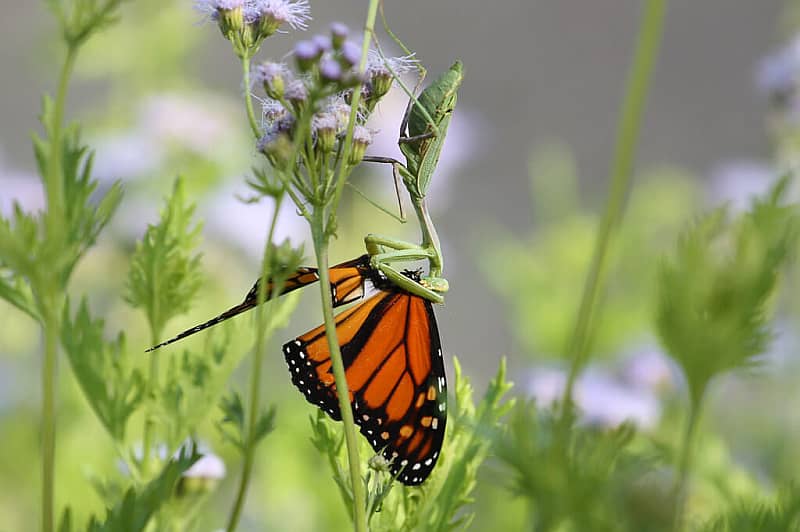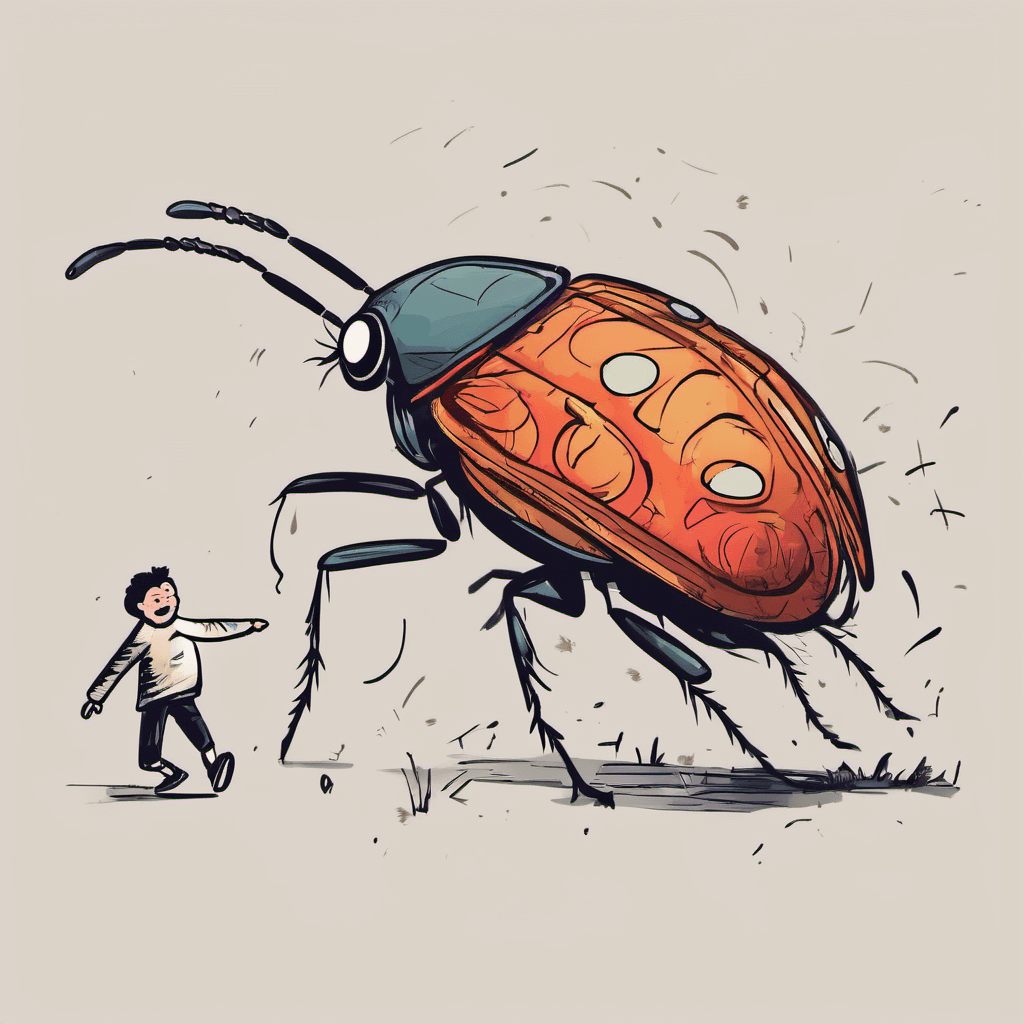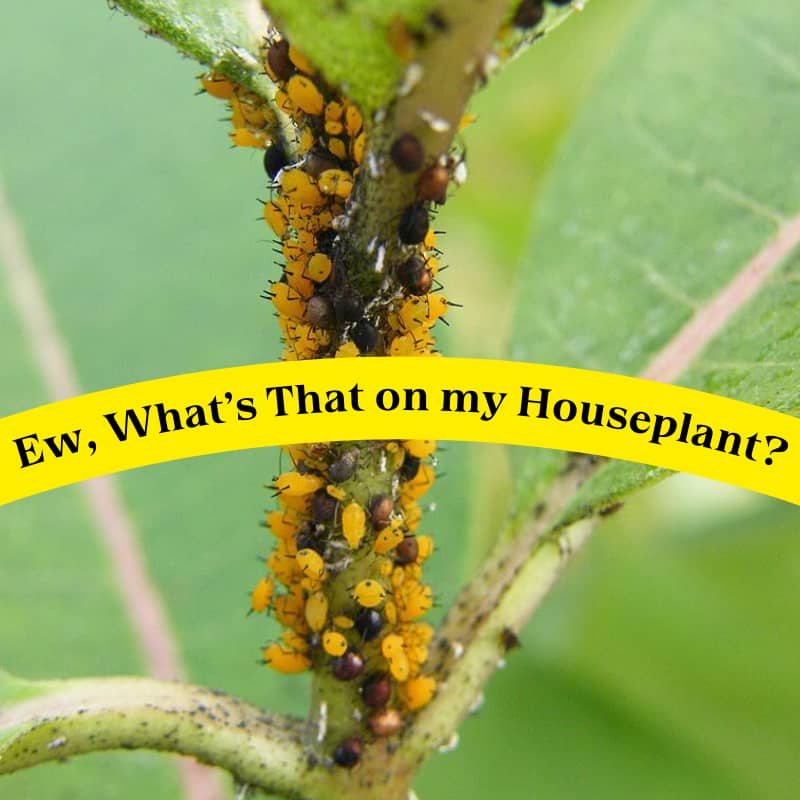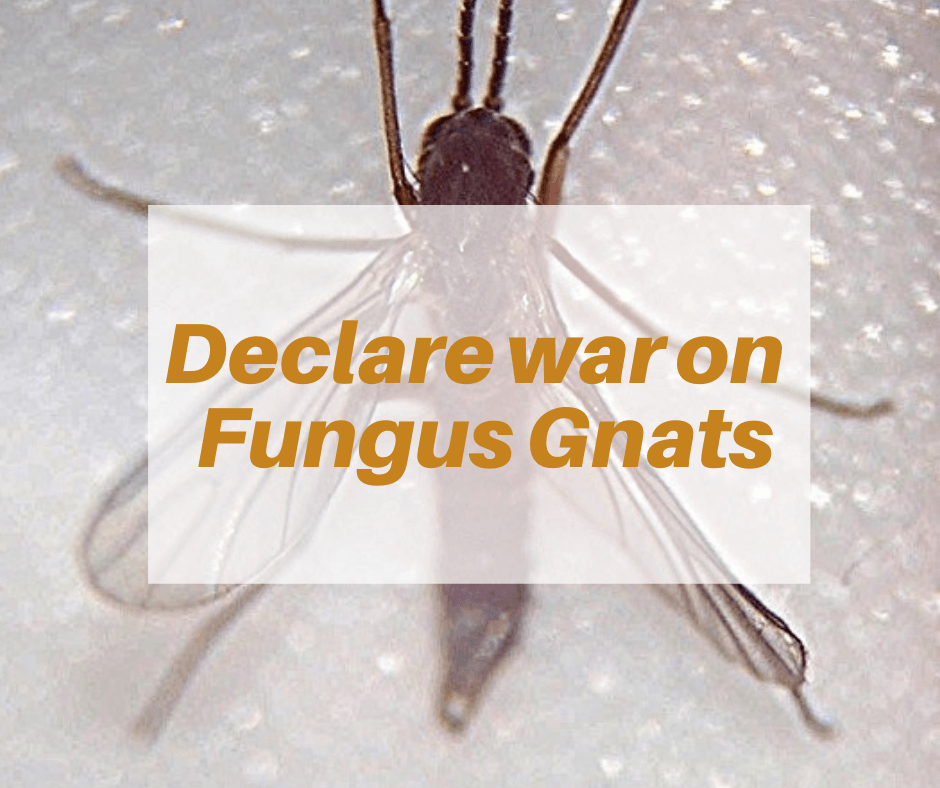This post may contain affiliate links. As an Amazon Associate we earn from qualifying purchases.
It sure seems like bad garden bugs outnumber the good. Learn how to recognize them and get rid of them.
If you belong to any of Facebook’s gardening groups (and you should!), you’ve no doubt seen photos of bugs with the caption “friend or foe?”
New gardeners, especially, seem to be under the impression that most of what we find flying, running or sitting on our plants apparently not doing anything, are bad. And, I do think that the bad bugs outweigh the good ones.
Today we dive into the former. Those little nasties that suck the life our of our gardens.
Praying mantis
 This one’s reputation drives me nuts. When and where it got the hero rep is beyond me, but it really needs to stop.
This one’s reputation drives me nuts. When and where it got the hero rep is beyond me, but it really needs to stop.
Yes, they kill some of the pests that eat our garden plants. But, guess what? They don’t limit themselves to the bad guys. They, in fact, ARE one of the bad garden pests.
“… as generalist, ambush predators, they also kill virtually everything else, including beneficial insects. “They just eat whatever is moving and within their reach,” according to Fern Campbell, citing Michael Maxwell, at National University in La Jolla, California. (piedmontmastergardeners.org)
Not only that, but two species, the Chinese and the European, are considered so invasive that they are endangering our native mantis, the Carolina (Stagmomantis carolina).
The best time to rid the garden of them is before they hatch from their egg cases. The best way to do that is to hunt for the egg cases and destroy them.
So, why should you remove the praying mantis and its egg cases from the garden? The “… largest single component of the diet of the native mantid was honeybees, a species in decline,” according to Campbell, citing Maxwell’s research.
There are also well-documented cases of mantids eating hummingbirds (among other birds), monarch butterflies, amphibians (frogs, etc.) and reptiles (such as lizards).
What’s really heartbreaking is that the mantid doesn’t even need to kill a honeybee to disrupt the hive.
When a honeybee returns to the hive it will perform dances as a means to communicate with the others in the nest: “’round dances’ and ‘waggle dances’.’
Apparently, the round dance tells everyone that it found an amazing pollen stash. The waggle dance tells them “…how far to go and in what direction the nest mates need to fly.”
Known as a “non-consumptive effect,” all the mantid needs to do is be near a bee. If the bee knows it’s in the vicinity, his “recruitment dancing” is curtailed, thereby magnify[ing] the effects of individual predation attempts at a colony level.”
In other words, all of the bees in the colony are impacted just by detection of a mantis nearby. (Allison Bray and James Nieh, Non-Consumptive Predator Effects Shape Honey Bee Foraging and Recruitment Dancing, from the journal PLoS One, 2014; 9(1): e87459.)
Depending on your climate, egg cases are formed in late summer into fall, making them easy to see on the bare branches of winter. Here is what you’re looking for:

If you value the pollinators and other beneficial insects in your garden, destroy the egg cases as you find them.
If you’re a gardener who actually orders them online, please rethink that plan.
Tomato hornworm

The moth in the above photo is a five-spotted hawkmoth (Manduca quinquemaculata). Its offspring, on the right, is the notorious tomato hornworm.
Don’t let the name fool you, though. These huge, ugly, green worms eat not only tomato plants but just about any plant in the Solanaceae family, including peppers, eggplant and others.
Hornworms hatch, depending on region, in early summer (sometimes late spring).
One tomato hornworm can completely defoliate a plant, but there is rarely only one. They like bringing their kin along for the feast.
Once on the tomato or other plant, they’re very hard to find. Some intrepid gardeners know that the hornworm glows in the glare of a black light. Into the garden they go, after dark, to round them up and destroy them.
There are several other ways to dispatch of these plant destroyers after removing them from the plant:
- Drop them into a bucket of water
- Leave them out for the birds to feed on
- This one is gross. “… place in an escape-proof bag or container, freeze for at least 24 hours, and then dispose of in the garbage can.” (flukerfarms.com)
If you just can’t bring yourself to touch tomato hornworms (and I can’t blame you!), purchase some Bt (Bacillus thuringiensis), a naturally occurring soil-borne bacterium. It’s ideal if you’re growing organically.
Bt, by the way, describes this bacterium’s genus and species. It is further narrowed down in to varieties or strains. Each variety targets a certain class of pests.
The kurstaki strain is best for hornworms and other caterpillars, so ensure you’re buying the right one when you go shopping. It is often listed on the label as Btk. Southern Ag makes one and it’s OMRI listed (organic).
Aphids
Aphids scare new gardeners. It’s not surprising since a bad infestation can happen overnight and it just looks creepy. They are, thankfully, one of the easier pests to get rid of.
I use a jolt of water from the hose. They have such soft little bodies, the blast explodes them off the plant. Very often, more will come in a few days, but I just give them the same treatment and pretty soon they give up.
By the way, on roses and other flowering plants you may want to hold your hand behind the buds as you spray. I say “buds” because the younger the plant material, the more aphids you’ll see. They love that tender stuff.
Ok, so you don’t want to blast with water. Another solution is lady bugs but they don’t stick around for long. Many nurseries carry little bags or containers of the critters at a reasonable price. Water the plants before letting them loose around dusk.

Mealy bugs
This one — this little creep and all his creepy friends and rellies — is the bane of my existence.
I collect hibiscus plants and mealy bugs happen to love them. From mid-summer on, it’s a battle between this gardener and these tiny, white savages.
They appear to be white, but that’s merely a waxy coating. The youngins’ are yellow. And, have I mentioned they are bad garden pests?
Mealybugs, like aphids, appear in colonies, meaning there are a lot of them all jammed into one spot. Sure, you’ll find the random mealy hanging out here and there, but a wad of “white stuff” on a stem is a telltale sign of a mealy bug infestation.
Mealy bugs suck sap from the plant and leave behind honeydew, that sticky substance that attracts ants and black sooty mold.
The impact on the plant is varied. Leaf loss is one result of an infestation, but typically, the plant will exhibit an overall reduction in vigor, according to M. L. Flint, Extension Entomologist Emerita, Department of Entomology, UC Davis.
Neem oil is one suggested solution which I found lacking. I’ve just started using Arber Bio Insecticide and, so far, I’m seeing good results.
 Spider mites
Spider mites
This is the only garden pest to which I’ve lost the battle and my plant. It was a young palm and the spider mites fought harder than I did, I guess.
They are a challenge to get rid of, once they get a foothold, so act quickly as soon as you suspect an infestation.
One of the first symptoms you may see includes tiny white or yellow spots on the leaves. This is known as “stippling.” Check the undersides of the leaves for the mites.
They are very tiny, so you’ll need to look closely. Later, their webbing becomes evident and then you know for sure that you have an infestation. By this point, however, the infestation may be impossible to control.
Never say never, though! Spray one of the following directly on the mites
- Azadirachtin
- Horticultural oil
- Neem oil
- Pyrethrins
Repeat the treatment every three days until the creeps are gone.

Thrips
If you grow roses you are most likely acquainted with the Western flower thrips (Frankliniella occidentalis). This is a tiny insect with a powerful hunger.
It harms plants by using its “… rasping-sucking mouthparts that resemble a soda straw,” to suck the juices from plant tissue, according to entomologists at North Carolina State Extension.
Thrips leave behind stippled leaves and some leaves may have a silver cast to them. An infestation “… can also be identified by the unique twisting they cause on new growth,” according to the pros at Arbico Organics.
Both beneficial nematodes and neem oil work well to control thrips infestations. If you decide on using beneficial nematodes, look for Steinernema feltiae, and release them on the soil. You can purchase these on Amazon.com.
You’ll also find neem oil on Amazon. We have had good results with Bonide Captain Jack’s Neem Max.
 Scale
Scale
Scales are weird-looking pests. They resemble small shields sitting on plants. They harm the plant by sucking the juices from it.
That shield is actually a protective waxy covering that is all but impenetrable, so controlling them can be challenging.
If you can get them when they are young, in the crawler stage, good on you!
Arber offers an organic bio-insecticide that works wonders when trying to control scale. You can find it on their website, growarber.com.

Squash bugs
If you grow cucurbits (squash, watermelon, pumpkin, melons, zucchini, etc.) you are probably all too familiar with squash bugs. They, like many of the others we’ve discussed, suck the sap from the plant.
Unlike the others, however, they also secret their saliva, which is toxic, into the plant. This causes a disease known as Anasa wilt (Anasa tristis) which causes the plant’s foliage to wilt, turn black and die.
Sprays don’t seem to work on these little buggers so the experts at Arbico Organics recommend using insect netting to keep them away from your cucurbits. Bootstrap Farmer sells a good product and this one at Amazon.com is 5-star rated.
 Whiteflies
Whiteflies
Whiteflies don’t look at all like flies. Instead, they resemble tiny moths. These, like so many other pests, are sap suckers and you can find them on the undersides of leaves.
Or, just tap the plant and if you are engulfed in a cloud of white stuff, hello! You have a whitefly infestation.
Although they don’t bite or sting humans, they can kill a plant. Not only do they suck the juices from the plant, but the adults transmit viruses when they feed.
You can buy the eggs of a tiny wasp (Encarsia formosa aka greenhouse whitefly parasite) that will kill the whiteflies on Amazon.com. Follow the instructions fully for best results. No, they won’t harm the beneficials in the garden or bite the gardener or his/her kids.
Now that you’ve familiarized yourself with the ickies of the garden, head on over here and learn all about some Good Garden Bugs (with photos)
Praying mantis egg cases image sources:
European mantis Mantis religiosa egg case: Whitney Cranshaw, Colorado State University, Bugwood.org licensed under a Creative Commons Attribution 3.0 License.
Carolina mantis by Beatriz Moisset – Own work, CC BY-SA 4.0,
Chinese mantis by Rhododendrites – Own work, CC BY-SA 4.0







